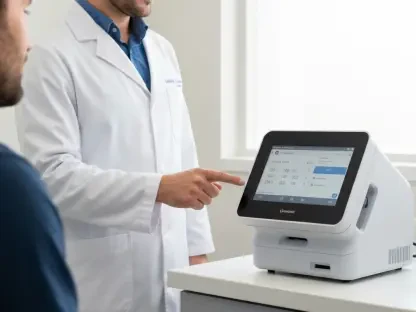The landscape of clinical trials is on the brink of a significant transformation, driven by the integration of Real World Data (RWD). By 2025, the use of RWD is expected to revolutionize the way clinical trials are conducted, offering new opportunities for efficiency, accuracy, and patient-centric approaches. This article explores the future of clinical trials, focusing on the integration of RWD, the challenges and solutions, and the impact on the healthcare industry.
The Role of Real-World Data in Clinical Trials
Understanding Real-World Data
Real World Data (RWD) refers to health-related data collected from various sources outside of traditional clinical trials. These sources include electronic health records (EHRs), claims databases, patient registries, and wearable devices. RWD provides a comprehensive view of patient health and treatment outcomes, offering valuable insights that can enhance clinical research. The extensive collection of data from diverse sources allows researchers to tap into an unprecedented wealth of information, leading to a more holistic understanding of patient health and treatment efficacy.
One of the key benefits of RWD is its ability to capture real-life scenarios and patient behaviors that are often missed in controlled clinical trial environments. By incorporating RWD, researchers gain a broader perspective on how treatments perform in everyday settings, thus increasing the external validity of their findings. This comprehensive approach allows for a more accurate assessment of treatment outcomes and potential side effects, ultimately leading to safer and more effective therapies for patients.
Benefits of Integrating RWD
Integrating RWD into clinical trials offers numerous benefits. It enables researchers to access a broader and more diverse patient population, leading to more generalizable results. RWD can also improve the efficiency of clinical trials by reducing the need for extensive data collection and allowing for real-time monitoring of patient outcomes. Additionally, RWD can help identify potential safety issues and treatment effectiveness in real-world settings. This integration allows for more adaptive trial designs, where data-driven decisions can be made during the trial course, potentially reducing time and costs associated with traditional study designs.
Moreover, the use of RWD enhances patient engagement and adherence by incorporating patient-generated data from wearable devices and mobile health applications. These technologies provide continuous monitoring, offering a more comprehensive picture of patient health beyond the confines of clinical settings. Consequently, the adoption of RWD fosters patient-centric approaches, improving the overall quality and relevance of clinical research. The richness and depth of RWD empower researchers to make more informed decisions, ultimately accelerating the development of new therapies and improving patient outcomes.
Challenges in RWD Integration
Despite its potential, integrating RWD into clinical trials presents several challenges. Data quality and standardization are major concerns, as RWD comes from diverse sources with varying formats and levels of accuracy. Interoperability between different data systems is another significant hurdle. Addressing these challenges requires robust data governance frameworks and advanced technological solutions. The inconsistency in data quality can lead to erroneous conclusions if not managed properly, highlighting the need for stringent data validation processes and standardization efforts.
Additionally, ensuring seamless interoperability among disparate data sources is crucial for successful RWD integration. The lack of standardized data exchange protocols often complicates data aggregation and harmonization, impeding the efficiency of clinical trials. Collaborative efforts within the industry, along with regulatory support, are essential to develop and implement interoperability standards. Overcoming these challenges will pave the way for more seamless and effective use of RWD in clinical trials, ultimately benefiting patients, researchers, and the healthcare industry as a whole.
Overcoming Operational and Regulatory Barriers
Data Quality and Standardization
Ensuring data quality and standardization is crucial for the successful integration of RWD. The Clinical Data Interchange Standards Consortium (CDISC) has made significant strides in this area through its Healthcare Link Initiative. By establishing standardized data formats and protocols, CDISC helps ensure that RWD is reliable and comparable across different studies. The adoption of these standards facilitates more efficient data aggregation and analysis, enabling researchers to derive meaningful insights from diverse data sources. Consistency in data quality is paramount for maintaining the integrity and reliability of clinical research findings.
Organizations must invest in robust data governance frameworks that emphasize data validation and quality assurance processes. This includes implementing automated data cleaning and harmonization tools to standardize disparate data sets. Regular audits and continuous monitoring of data quality are essential to identify and address discrepancies promptly. Establishing a culture of data integrity and adherence to standardization protocols will significantly enhance the reliability and comparability of RWD, fostering greater confidence in research outcomes and advancing the field of clinical trials.
Interoperability Solutions
Legacy systems and lack of interoperability pose significant barriers to RWD integration. The FDA’s Sentinel Initiative is a notable success story, demonstrating the use of distributed networks for secure, privacy-compliant collaboration across multiple sites. Solutions such as FHIR-based APIs and hybrid data models are essential for seamless integration of real-world and traditional clinical trial data. Implementation of these solutions facilitates real-time data exchange and analysis, streamlining the integration process and enhancing the overall efficiency of clinical trials.
Moreover, advancing interoperability requires collaborative efforts between stakeholders, including healthcare providers, researchers, and technology developers. Establishing comprehensive data-sharing agreements and protocols is critical to ensuring secure and ethical data access. Leveraging standardized APIs and interoperability frameworks, such as FHIR and HL7, promotes seamless data exchange, enabling a more integrated healthcare-research ecosystem. These efforts are vital for overcoming interoperability challenges and harnessing the full potential of RWD in transforming clinical trials.
Addressing Regulatory Barriers
Regulatory barriers, including data privacy and consent requirements, vary across jurisdictions. Dynamic consent management systems, advanced de-identification techniques, and secure computing enclaves have proven effective in safeguarding patient privacy while facilitating meaningful data sharing. Early and consistent engagement with regulatory authorities can help mitigate regulatory uncertainty and ensure compliance. Developing clear protocols for data access, use, and sharing is crucial for maintaining regulatory compliance while maximizing the utility of real-world data in clinical research.
Furthermore, fostering a proactive approach to regulatory compliance involves establishing dedicated teams to monitor evolving regulations and ensure organizational readiness. This includes regular training for research staff on best practices for data privacy and security. Emphasizing transparency and building trust with patients through clear communication about data use and protection measures is also critical. By addressing regulatory barriers effectively, organizations can create a secure and compliant environment for integrating RWD into clinical trials, ultimately improving research quality and patient outcomes.
Building the Technical Infrastructure
Scalable Data Collection and Integration
A sophisticated technical infrastructure is essential for continuous, embedded clinical trials. This includes a scalable data collection and integration layer supported by a cloud-based architecture. The FDA’s MyStudies platform serves as an example of how cloud-based solutions can facilitate efficient data collection and integration. Scalable infrastructure allows for the seamless expansion of data sources and the efficient aggregation and processing of large volumes of data. This capability is crucial for handling the diverse and dynamic nature of RWD.
Cloud-based solutions provide the necessary flexibility and scalability to support continuous data collection and integration from multiple sources. Implementing advanced data integration platforms and employing adaptable data models ensure real-time data exchange and analysis. Moreover, leveraging cloud technology enables cost-effective storage and computing power while maintaining high levels of security and compliance. Investing in scalable and robust technical infrastructure is foundational for the successful integration of real-world data in clinical trials, ultimately enhancing research efficiency and outcomes.
Standardized APIs and Interoperability Protocols
Standardized APIs and interoperability protocols, such as FHIR and HL7, are critical for seamless data exchange between healthcare and research systems. These protocols enable real-time data sharing and integration, enhancing the efficiency and accuracy of clinical trials. Developing and adopting standardized communication protocols streamline data flow, ensuring consistent and reliable data exchange. Interoperability enhances collaboration across different research and healthcare entities, driving innovation and improving patient outcomes.
Moreover, leveraging standardized APIs facilitates the integration of third-party applications and tools, enhancing the overall research ecosystem. The adoption of interoperable systems fosters a more connected and collaborative research environment, where data can be seamlessly shared and analyzed across multiple platforms. Continued investment in interoperability standards and protocols will drive the successful integration of RWD, transforming clinical trials and advancing healthcare research.
Secure Data Storage and Processing
Secure data storage and processing infrastructure are vital for maintaining data integrity and compliance. This includes distributed database systems, secure data lakes, and strong security measures such as end-to-end encryption, identity and access management, and network security controls. Implementing these security measures ensures the protection of sensitive patient data throughout its lifecycle. Maintaining high standards of data security and compliance builds trust with patients and regulatory bodies, facilitating more robust data sharing and collaboration.
Organizations must adopt comprehensive security frameworks that encompass physical, technical, and administrative safeguards. Regular security audits and assessments are necessary to identify and mitigate potential vulnerabilities. Utilizing advanced encryption technologies and secure access controls further protects patient data from unauthorized access and breaches. By prioritizing data security and compliance, organizations can create a safe and trustworthy environment for integrating RWD into clinical trials, ultimately enhancing research quality and patient trust.
Incorporating Patient Feedback
Engaging Patient Advisory Boards
Incorporating patient feedback into clinical trial protocol design is essential for ensuring patient-centric trials. Patient advisory boards provide a platform for early engagement, allowing researchers to gather valuable insights from patients and caregivers. These boards serve as a conduit for patient voices, ensuring that their needs, preferences, and experiences are considered in trial designs. Engaging patients early in the process fosters a sense of ownership and collaboration, leading to more patient-centered and effective clinical trials.
Moreover, patient advisory boards facilitate continuous dialogue between researchers and patients, fostering mutual understanding and trust. This engagement helps identify potential barriers to participation and retention, enabling researchers to design more feasible and accessible trials. By actively involving patients in the protocol design process, researchers can enhance study relevance and outcomes, ultimately improving patient satisfaction and trial success.
Structured Feedback Mechanisms
Structured feedback mechanisms, such as the Patient-Focused Drug Development (PFDD) program by the FDA, offer a systematic approach to gathering patient input. These mechanisms help ensure that patient perspectives are considered throughout the trial design and implementation process. Implementing standardized feedback tools and methods allows for consistent and reliable collection of patient insights. This structured approach provides a comprehensive understanding of patient experiences, preferences, and concerns, informing more patient-centric trial designs.
Additionally, leveraging digital platforms and tools for patient feedback collection enhances accessibility and convenience. Online surveys, mobile applications, and virtual focus groups enable continuous and real-time patient engagement. This approach not only improves data collection efficiency but also broadens the reach to diverse patient populations. By integrating structured feedback mechanisms, researchers can enhance the relevance and feasibility of clinical trials, ultimately leading to better patient outcomes and trial success.
Standardized Tools for Patient Input
Standardized tools, such as TransCelerate BioPharma’s Patient Protocol Engagement Toolkit (P-PET), facilitate the collection of patient feedback in a consistent and reliable manner. These tools help researchers design more feasible protocols, improve recruitment rates, and enhance patient retention. Standardizing patient feedback collection ensures that insights are systematically gathered, analyzed, and acted upon, leading to more patient-centric trial designs. Consistency in feedback collection allows for the identification of common themes and trends, informing more effective strategies for patient engagement and retention.
Implementing standardized tools also simplifies the feedback process for patients, reducing the burden and improving their willingness to participate. These tools provide a structured framework for capturing diverse patient perspectives, ensuring that their voices are heard and considered. By adopting standardized methods for patient input, researchers can foster greater patient engagement and collaboration, ultimately enhancing the quality and success of clinical trials.
Prioritizing Data Standards and Interoperability
FHIR and CDISC Standards
Life sciences organizations must prioritize data standards and interoperability initiatives to enable integrated research-care systems. FHIR (Fast Healthcare Interoperability Resources) and CDISC standards are essential for seamless communication between healthcare and research systems. Adopting these standards ensures consistent and reliable data exchange, enhancing the efficiency and accuracy of clinical trials. Standardization promotes better data integration and reduces redundancy, ultimately improving the quality of research outcomes.
Organizations must invest in training and resources to implement and adhere to these standards effectively. This includes collaborating with industry stakeholders to share best practices and develop common guidelines. By prioritizing data standards and interoperability initiatives, organizations can create a more connected and efficient research ecosystem, driving innovation and improving patient outcomes.
Participation in Interoperability Initiatives
Participation in initiatives such as HL7 and the DARWIN EU network can enhance data interoperability skills and promote the adoption of best practices. These initiatives provide a platform for collaboration and knowledge sharing among industry stakeholders. Engaging in interoperability initiatives fosters a culture of collaboration and continuous improvement, driving the successful integration of RWD into clinical trials. These initiatives also provide access to valuable resources, tools, and expertise, supporting organizations in their interoperability efforts.
Moreover, active participation in interoperability initiatives helps organizations stay abreast of evolving standards and regulatory requirements. This proactive approach ensures that organizations are well-prepared to implement and adhere to new guidelines, maintaining compliance and enhancing research quality. By collaborating with industry partners and participating in interoperability initiatives, organizations can drive innovation and improve the integration of RWD in clinical trials.
Security and Accessibility Frameworks
Developing comprehensive security and accessibility frameworks is essential for protecting patient data while ensuring meaningful access and use. Implementing advanced security measures, such as end-to-end encryption and secure access controls, safeguards data integrity and confidentiality. Additionally, adopting accessibility frameworks, such as SMART on FHIR protocols and FAIR data principles, enhances data usability and sharing, promoting a more transparent and collaborative research environment.
Continual assessment and improvement of security and accessibility frameworks are crucial to adapt to emerging threats and technological advancements. Regular audits, risk assessments, and staff training ensure that security measures remain robust and effective. By prioritizing security and accessibility, organizations can protect patient data while enabling its meaningful use in clinical trials, ultimately driving research innovation and improving patient outcomes.
Conclusion
The landscape of clinical trials is facing a dramatic transformation thanks to the integration of Real World Data (RWD). By 2025, the incorporation of RWD is set to revolutionize the execution of clinical trials, paving the way for enhanced efficiency, greater accuracy, and a more patient-centric approach. This evolution in clinical trials suggests a future where the collection and analysis of data from real-world sources such as electronic health records, insurance claims, and patient registries become standard practice.
While the benefits are promising, the shift also presents challenges. Integrating diverse data sources and ensuring data quality and standardization will be crucial. Privacy concerns and regulatory compliance are also significant issues that will need meticulous attention. Potential solutions include advanced data analytics, improved interoperability standards, and transparent regulatory frameworks designed to protect patient information while enabling innovation.
The move towards RWD in clinical trials promises to reshape the healthcare industry profoundly. It is expected to speed up the development of new therapies, reduce costs, and ultimately lead to better patient outcomes. As we approach 2025, stakeholders in the healthcare sector must collaborate to address these challenges and fully leverage the potential of RWD to transform clinical trials.









